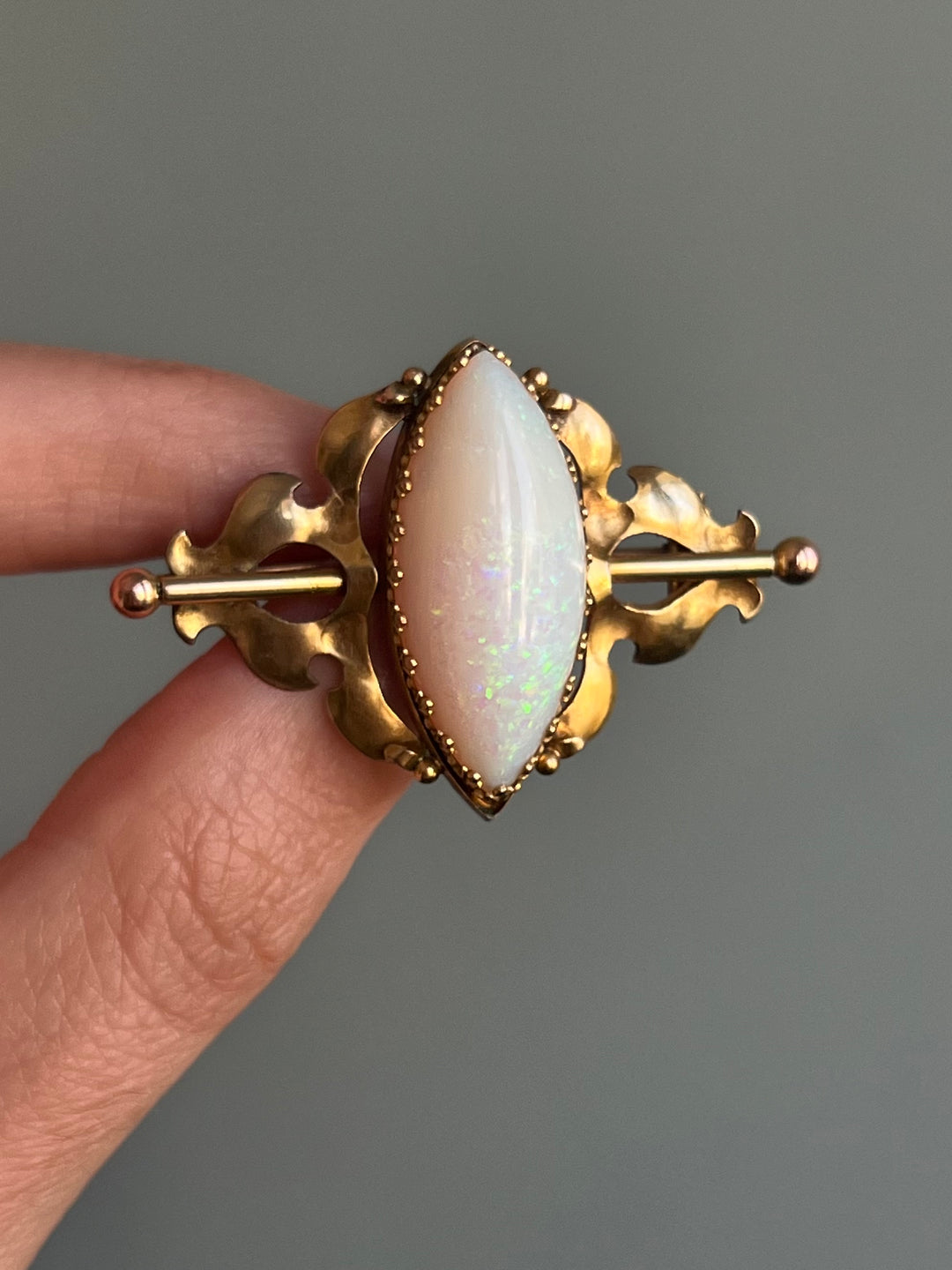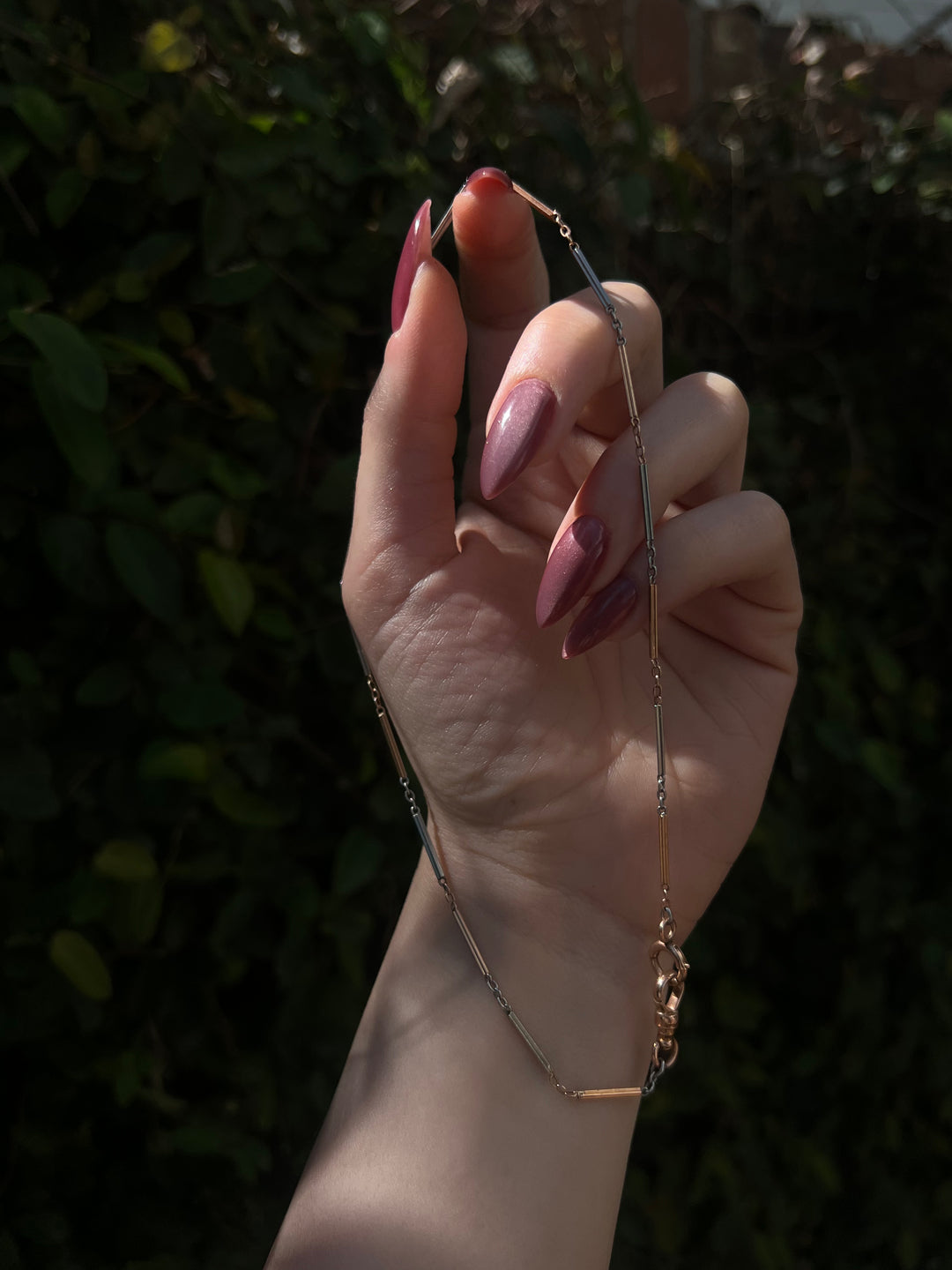Moonstones 👑✨
Few things have become more coveted in the world of antique jewelry than Victorian moonstones. This drop holds two such beauties; earrings and a stunning paste halo ring, all moonstones with prominent blue schillers, eye-clean ground, and that glowing adularescence that categorize the best examples of the 19th c. Read on for details on these stunners; any would make a remarkable addition to a fall jewel wardrobe.
The first moonstone feature is this stunning Moonstone Daisy Ring with Paste Halo. Whatever Victoria adored, her loyal legions turned into fashion. Moonstone jewelry, was at its peak in the Victorian era, around the same time when demand for colorless gems, that wouldn't overtake the diamond, was in vogue. Moonstones were also often surrounded by diamonds and pearls because of their understatedness (in this case, paste!) . This is a gorgeous 9k example with a sterling top and gorgeous swagged gallery. Circa 1890, English, with a brilliant blue schiller moonstone.

Next, a special 18k Yellow Gold + Platinum Diamond Toi et Moi Ring. The Toi Et Moi design (French for ‘you and me’) is considered one of the most romantic ring styles of all time. It showcases two gems that symbolize the togetherness and intimacy between two souls. The gems are chosen for their ability to both contrast and complement each other, bound together by a precious metal without losing their individuality. The setting was considered important as the closeness of the gemstones symbolizes balance and equality. During the Victorian era, Toi Et Moi rings often included diamonds, as we can see in this pristine example, boasting .25ctw of VSI diamonds set in all-original prongs. 
As for the second moonstone gem, we have a timeless pair of Moonstone Cabochon Earrings. The rarest and most expensive moonstones will be colorless with a floating blue color or schiller that seems to hover above the stone. This phenomenon, termed adularescence, results from moonstone’s composition of orthoclase and albite feldspars arranged in layers. Light reflected from these layers produces interference effects and causes adularescence. If the layers are very thin, a blue schiller is seen; when they are thicker a white schiller is seen. With sterling bezels and 9k tops, this pair of stones is immaculate. It is incredibly rare to find such blue schiller examples! Originating from the Edwardian period, these component earrings are perfect summer/winter additions to any collection.





Leave a comment